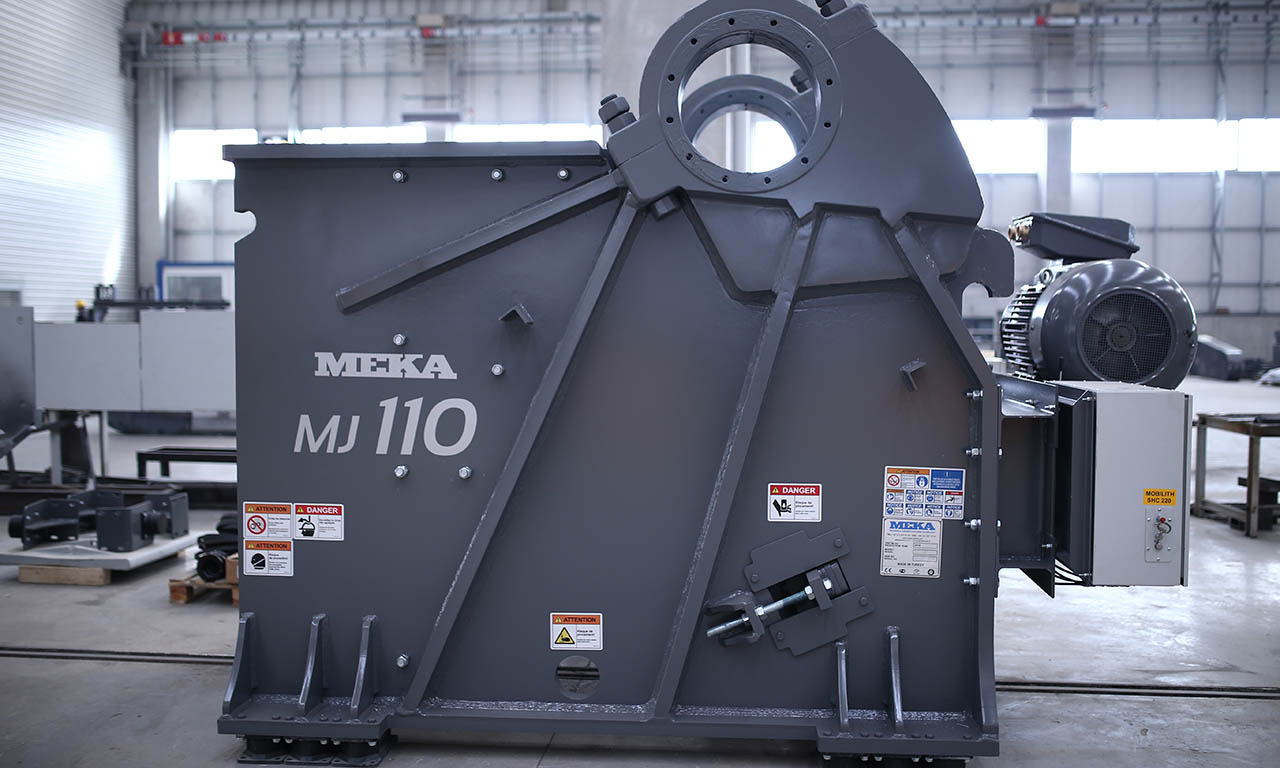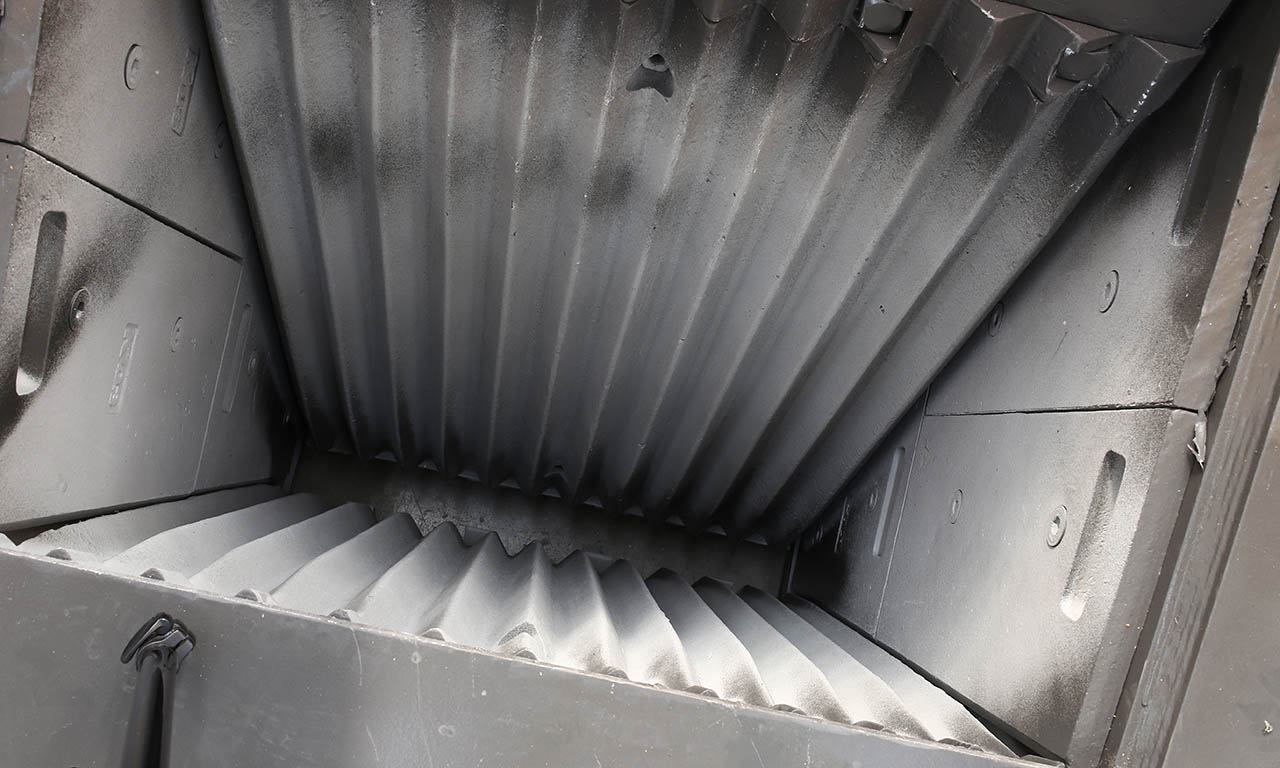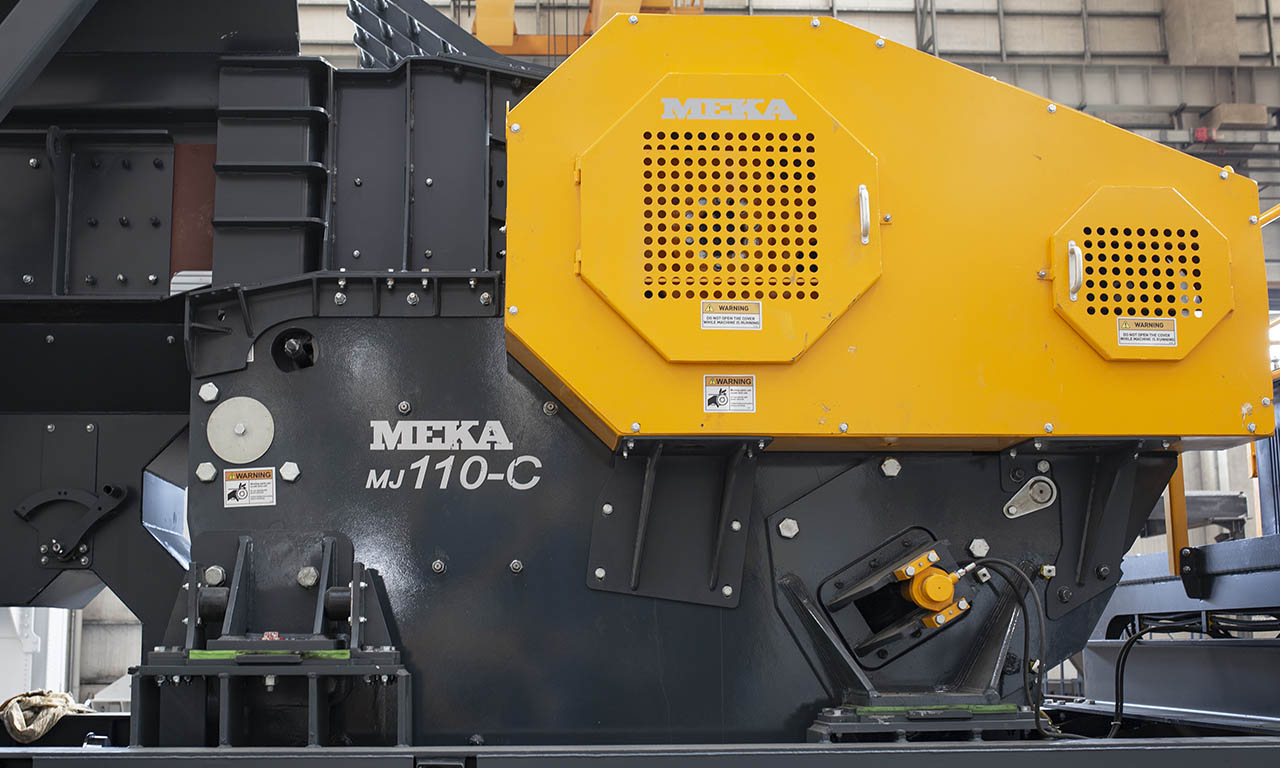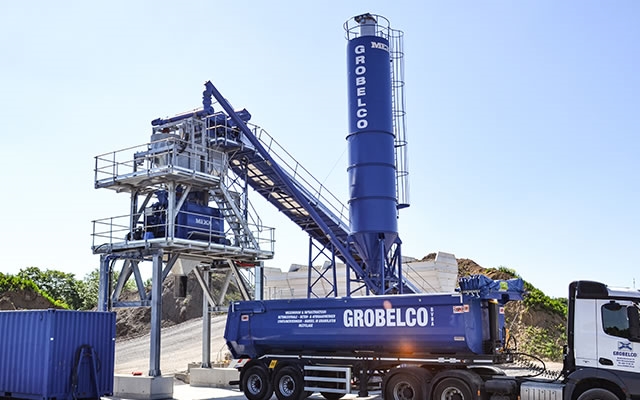Uygulamalar
Taş ocakçılığı, madencilik, geri dönüşüm, endüstriyel mineraller ile en zorlu besleme malzemelerinin sabit, yeraltı ve mobil kırma uygulamalarında primer ve sekonder kırma işlemleri için kullanılır.
Neden MEKA Çeneli Kırıcı?
- Yüksek kapasite,
- Aşınmaya dayanıklı, uzun ömürlü çene plakaları,
- Büyük malzeme kırma kabiliyeti,
- Optimize edilmiş kavrama açısı, malzemenin kırma haznesi boyunca düzgün bir şekilde ilerlemesini sağlayarak yüksek kırma oranı, üretkenlik ve çene plakalarının mükemmel kullanımını mümkün kılar
Çeneli Kırıcı Teknik Özellikler
MJ 60 |
MJ 65 |
MJ 70 |
MJ 90 |
MJ 110 |
MJ 130 |
MJ 110C |
MJ 120C |
MJ 150C |
MJS 90 |
MJS 110 |
|
| Besleme Açıklığı(mm) | 610x380 | 650x500 | 700x400 | 900x650 | 1100x850 | 1300x1000 | 1070x770 | 1200x870 | 1400x1200 | 900x200 | 1100x350 |
| CSS (Min - Maks) (mm) | 40-150 | 40-150 | 30-100 | 60-150 | 100-200 | 125-250 | 75-210 | 70-175 | 125-250 | 25-75 | 25-100 |
| *Kapasite (mtph) | 20-80 | 25-100 | 25-100 | 50-200 | 100-300 | 275-600 | 135-340 | 175-595 | 340-970 | 10-80 | 40-200 |
| Güç (kW) | 30 | 45 | 45 | 75 | 132 | 160 | 110 | 160 | 200 | 30 | 75 |
| **Ağırlık (kg) | 6000 | 7000 | 4200 | 11400 | 33000 | 43000 | 19000 | 27990 | 55400 | 6000 | 11000 |
*1,6 t/m³ veya 100 lbs/ft³ ağırlığındaki malzeme için. Kapasite değerleri yalnızca gösterge niteliğindedir, kırıcı performansı besleme gradasyonuna, besleme nem içeriğine, malzemenin kırılabilirliğine, kırıcı devrine, kurulu güce ve kırma devresi tasarımına bağlı olarak değişebilir.
** Gösterilen ağırlıklara tahrik motoru paketi, destek ayakları, bakım platformu, giriş ve çıkış olukları dahil değildir.
Çeneli Kırıcı Galeri
Çeneli Kırıcı Nedir?
Çeneli kırıcı, sıkıştırma kuvveti prensibine göre çalışan bir kırıcı türüdür ve sert malzemelerden yumuşak malzemelere kadar kırma işleminin aşamalarında kullanılır. Çeneli kırıcılar sabit ve hareketli çeneden oluşur; malzeme eksantrik bir mil sayesinde eliptik hareket yaparak sıkıştırma kuvvetinin uygulanması yoluyla hareketli çene ile sabit çene arasında ezilir.
Çeneli kırıcılar, büyük boyutlu kayaların kırılması için primer ve sekonder aşamalarda kullanılır. İstenilen ürün boyutuna göre çene ağız açıklığı ayarlanabilir.



























